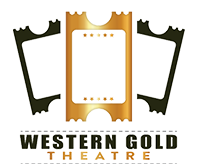STANLEY PARK NOTEBOOK
/ by Jacqui Birchall
(click images to enlarge)
A heron chick, awaiting rescue. (Jacqui Birchall Photo)
FOUND A FALLEN HERON CHICK?
Here’s What To (And Not) Do
Early in June we published photos and a story on our Facebook page about a heron chick that had fallen from its nest in the Stanley Park Heronry. We received a lot of advice regarding rescuing heron chicks that, for the most part, was incorrect. Here is information on how to help fallen heron chicks supplied by Gabriella Wohlgemuth, Support General Manager at the Wildlife Rescue Association of BC.
“Great Blue Heron fledglings behave differently compared to many other bird species that get reported to our helpline. In most cases involving young birds of other species, we advise monitoring them to see if the parents return to feed them. However, this approach is not suitable for heron fledglings.
“Great Blue Heron fledglings should not be found on the ground. When they are old enough to leave the nest, they can already fly and are fully able to stand tall on both feet. If you encounter a young heron that is not able to stand and looks less developed and smaller than adult herons, something has happened to them. In these situations, we ask members of the public to complete a web form to contact our helpline for guidance.
“Research indicates that heron parents do not return to feed young birds that have fallen from the nest. Fledglings rarely fall by accident, and many are either plucked and dropped by predators or pushed out of the nest by siblings.
The beauty of lost lagoon. (Sarah McMullan photo)
“Great Blue Heron chicks hatch at slightly different times. When food is abundant, all chicks typically remain in the nest and are fed by their parents. However, in times of food scarcity, older and stronger chicks may push their smaller siblings out of the nest to reduce competition for resources. Additionally, some young herons may end up on the ground due to predation attempts, particularly by eagles, that result in the chick being dropped.
“The young herons that are found on the ground frequently come into our wildlife hospital in critical condition.”
To report a wildlife emergency and to receive advice, the best way is to text the information to the Wildlife Rescue Association of BC (see Related Links below) The hours are generally 9 a.m. to 3 p.m., seven days a week.
The wonderful Michelle, who originally found the heron chick we reported on, was kind enough to return home, pick up a box, and drive the chick to the wildlife centre. Unfortunately, it did not survive due to the seriousness of its injuries.
You can also call for help from a park ranger through 311, 7 a.m. to 7 p.m. on weekdays and 8 a.m. to 5 p.m. on weekends.
Patience is needed when dealing with a fallen fledgling. Call lines have many recorded messages before you reach a live operator. In my experience, the 311 operators are very unfamiliar with Stanley Park and don’t understand the location you are describing. Give them directions that the park rangers will clearly understand. It may well take quite some time for a park ranger to arrive.
Please refer to the Wildlife Rescue Association of BC for information on all wildlife in distress and the actions required to take. We have included the link.
This is a fabulous organization which is desperately in need of both volunteers and donations. Please check the links below for what to do if you find a bird or an animal in distress. Do you have a car? The Wildlife Rescue Association needs drivers, those kind folks who pick up the injured wildlife and deliver them to the centre in Burnaby. Training is provided.
STANLEY PARK ECOLOGY WORKSHOPS
Engaging and Informative
The Stanley Park Ecology gives informative and engaging workshops.
I took their workshop on the heronry, presented by the very knowledgeable Julia Taylor, public environmental education co-ordinator for Stanley Park Ecology.
The Great Blue Heron mates for one season and the parents share in rearing their young. (City of Vancouver Photo)
Here is an overview.
The first recorded heronry was at Beaver Creek in the 1920s. It later moved beside the Aquarium, and then in 2001 to the trees close to the Park Board offices and the tennis courts. The herons find safety in numbers.
The Great Blue Heron’s droppings are acidic and bad for the trees, buildings and cars.
The herons are seasonally monogamous, and find a new mate each year.
The males return to the heronry in January and February, where they begin to repair nests or build new ones. There is a hierarchy for the best spots. The females start to return in March and are courted.
Males and females incubate the eggs and feed the chicks. Herons can lay two to five eggs, one a day. When the chicks hatch, the firstborn are often aggressive towards the younger chicks, sometimes pushing them out of the nest as they struggle to get more food. Chicks leave the nests after twelve weeks and are fully mature after about two years. Only a quarter of the chicks reach adulthood. Eagles are the chick’s greatest enemy.
Great Blue Herons live for 10 to 18 years. Sexing is difficult, and size is the best clue. The males are larger. The more mature the bird, the longer their beards, the correct name for which is aigrette.
The fireworks in July do not appear to affect the last of the heron chicks. They are old enough to leave, but they don’t, despite the racket from the fireworks!
Herons are great hunters and fishers. They fish for three-spined sticklebacks in Lost Lagoon and forage in the intertidal zone for crabs, flounders, frogs, tadpoles, salamanders, and rodents. Many Great Blue Herons spend the winters on the farms in Abbotsford and Delta, where, much to farmers’ delight, they hunt rodents.
One big, happy, extended family in a “gang Brood”.
(Jacqui Birchall Photo)
THOSE GAGGLES OF GEESE
Have you wondered why there are so many Canada Geese in Stanley Park? Have you ever thought these parents are hatching a huge number of chicks?
Canada Geese ‘gang brood’ or ‘creche’. They form co-operative groups of parents to raise and protect the chicks as a community. Unlike many waterfowl, where the female is left to raise the chicks alone, the males help to protect and raise them. The geese mate for life. The chicks can swim within 24 hours of hatching, learn to fly within two months (they require instruction), and stay with their parents for approximately a year. They are known to migrate with their parents.
the sign tell the story of algae in the lagoon. (Jacqui Birchall Photo)
ABOUT THAT ALGAE
The algae in Lost Lagoon is nothing new. We have reported on the algae extensively in the past. An excellent explanation of the problems facing the Lagoon is found in an extensive UBC study (see Related Links below).
Lost Lagoon was originally a tidal mud flat. The Squamish name for the area translates to “gets dry at times.” The poet, Pauline Johnson, named it Lost Lagoon as it would disappear at low tide. The construction of the Stanley Park Causeway stopped the tidal elements, and heavy metals from the traffic now permeate the Lagoon.
Turning on the fountain would be extraordinarily expensive and, according to expert reports, would not dispel the algae. The park board has installed information signs about the algae near the Lagoon.







